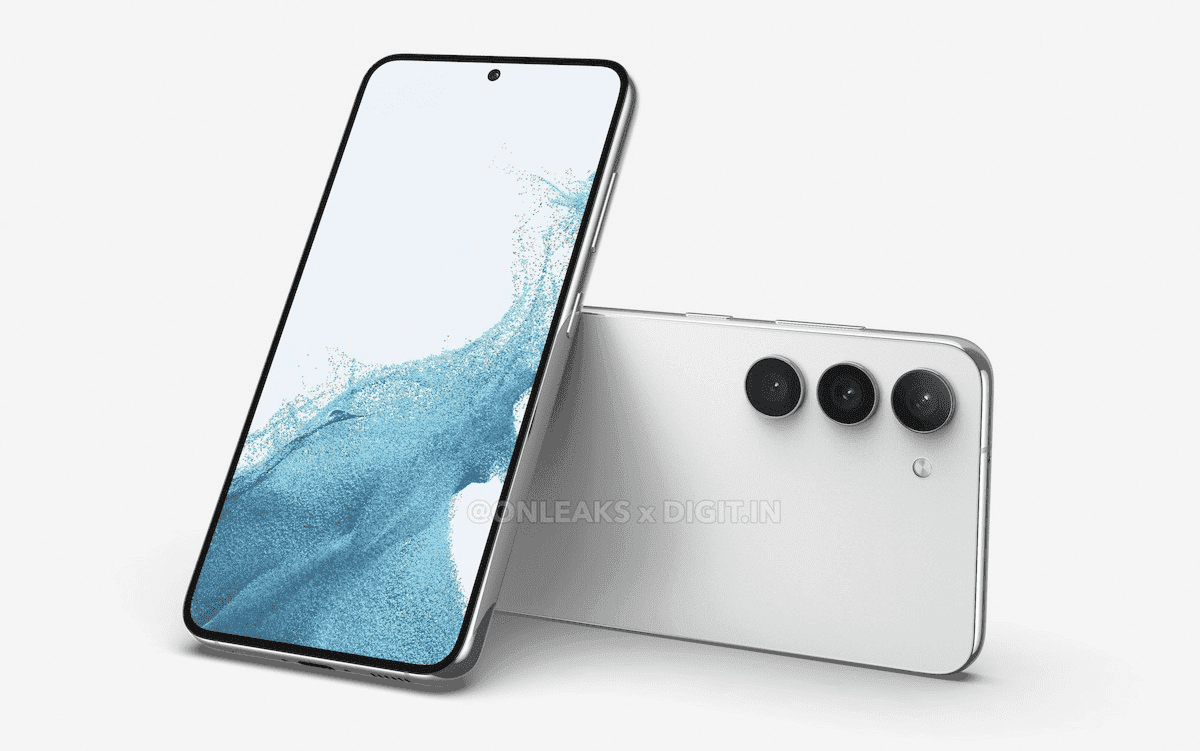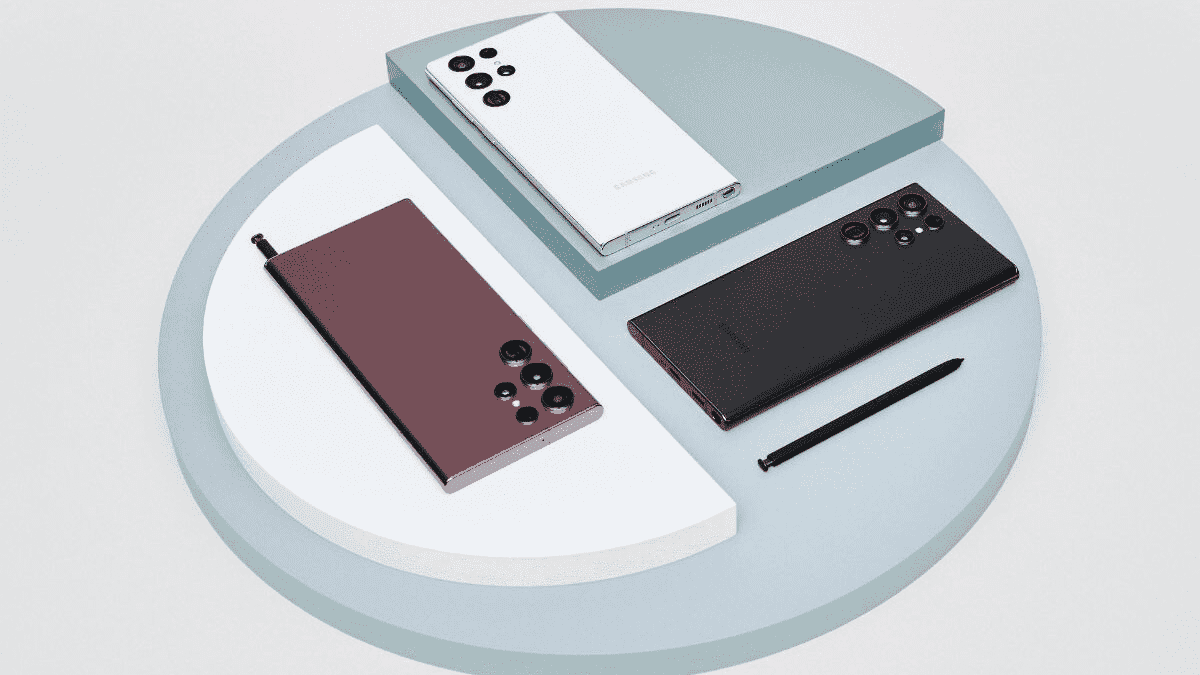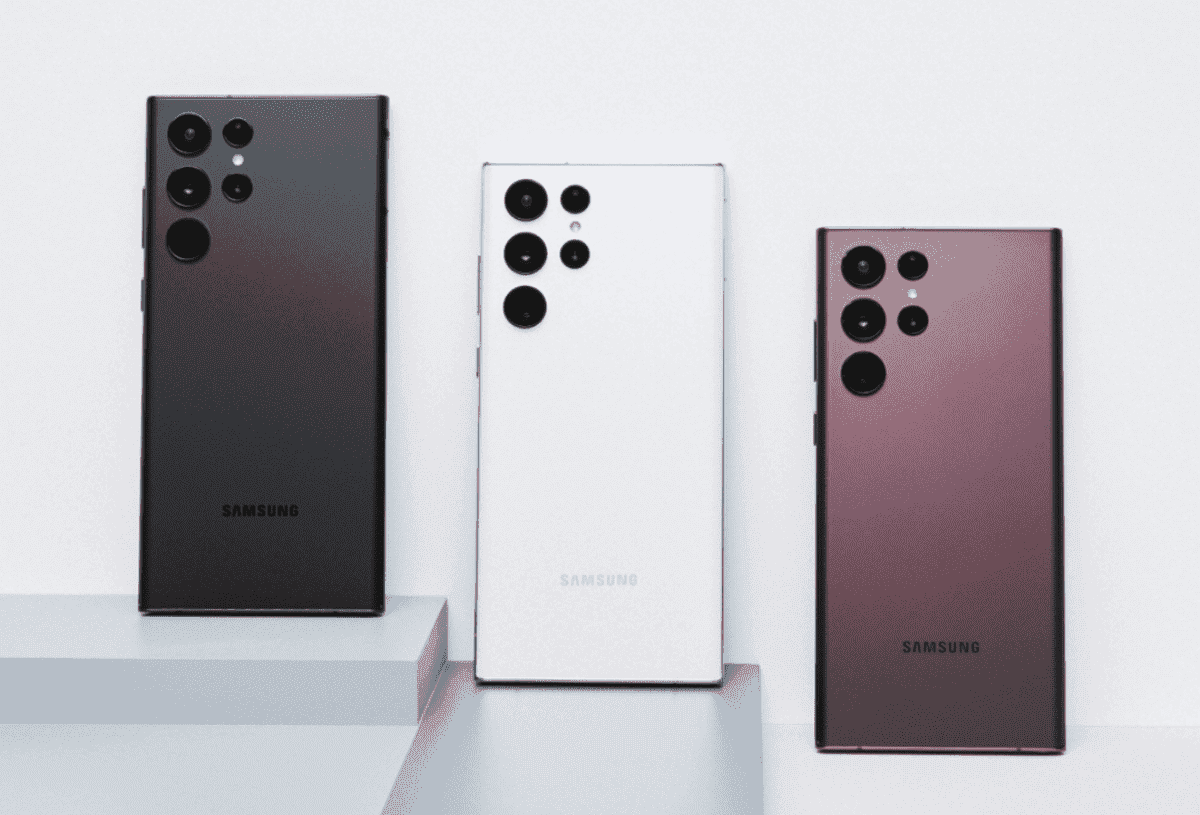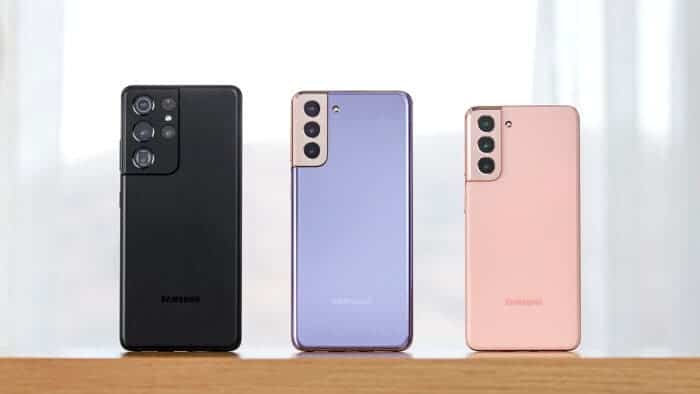Samsung’s Galaxy S23, S23 Plus, and S23 Ultra smartphones mark the beginning of a new generation of mobile devices. This article will tell you everything you need to know about the three smartphones in terms of design, screen, features, camera, performance, autonomy, and software.
The Galaxy S22 series will be replaced by the Galaxy S23 and its Plus and Ultra variants. We are still eagerly awaiting these newcomers to the most well-liked premium range of the Android ecosystem. Will we be entitled to a modest evolution or to significant changes and innovation? In this detailed Galaxy S23 article, you can find the answer to this question.
Galaxy S23 release date

When it comes to the release of smartphones for its main series, Samsung adheres to a very strict schedule. The South Korean manufacturer habitually releases its Galaxy S in February. Because it no longer exhibits at the MWC in Barcelona, where it previously unveiled its new models at the end of February for marketing in March. Recall that on February 9 at the Unpacked conference, the Galaxy S22, S22+, and S22 Ultra were unveiled before going on sale on February 25.
Samsung, however, has a good chance of releasing the Galaxy S23 earlier than expected. The three new models could very well be released early in 2023, in January. This would be consistent with Qualcomm’s announcements that its upcoming Snapdragon Summit conference will take place in mid-November rather than early December. Samsung will probably have access to chips earlier than in previous years, just like other manufacturers.
A poster from the Korean carrier KT states that the smartphones will be unveiled starting on December 23 (or even the day before). With general availability in stores beginning on January 6, 2023. It will be interesting to see if this leak is verified.
Galaxy S23’s prices
To get an idea of those who may be charged for this new generation, we will have to settle for the prices of the Galaxy S22, pending the formalization of prices by Samsung or a trustworthy leak from a reseller:
Galaxy S22:
- 8GB + 128GB: $799/£769/€879
- 8GB + 256GB: $849/£819/€929
Galaxy-S22+:
- 8GB + 128GB: $999/£949/€1,079
- 8GB + 256GB: $1,049/£999/€1,129
Galaxy S22 Ultra:
- 8GB + 128GB: $1,199/£1,149/€1,279
- 12GB + 256GB: $1,299/£1,249/€1,379
- 12GB + 512GB: $1,399/£1,329/€1,489
- 12-GB + 1TB: $1,599/£1,499/€1,689
Galaxy S23 design

Samsung is being fairly conservative with the design of its Galaxy S range of smartphones, similar to how Apple is with its iPhones. The Galaxy S22 Ultra, which replaced the Galaxy Note by including a slot for the S Pen stylus and adopting a less curved and more square design, was the most recent significant change. The Galaxy S23 Ultra will likely have an even more angular chassis than the S22 Ultra, according to the insider Ice Universe. The screen’s curved effect will also be less obvious.
Interestingly, OnLeaks, who shared renders of all the models, has confirmed this. Two of the Galaxy S23 Ultra’s rear sensors are built right into the phone’s body, giving it an advantage over the Galaxy S22 Ultra’s slightly thicker chin. Furthermore, we know that the Galaxy S23 Ultra will be smaller than the S22 Ultra, measuring 163.4 x 78.1 x 8.8 mm as opposed to 163.3 x 77.9 x 8.9 mm.
The Galaxy S23 series’ design will be very similar to what we already know for the most part. The punch will be back because there won’t be an under-screen selfie camera like on the Galaxy Z Fold 4. This generation confirms that the cameras are frequently the components that change the most between the two. The three cameras on the Galaxy S23 and S23+ protrude from the back cover of the smartphone, forming three distinct islands as a result.
There will also be a small difference in the dimensions. According to OnLeaks, the Galaxy S23 will be 146.3 x 70.8 x 7.6 mm in size as opposed to the Galaxy S22’s 146.0 x 70.6 x 7.6 mm dimensions. Samsung will enlarge its smartphone slightly while keeping the thickness the same. As a result, and against all expectations, the screen’s borders will widen. The Galaxy S23 + should have dimensions of 157.7 x 76.1 x 7.6 mm compared to the Galaxy S22 +’s 157.4 x 75.8 x 7.64 mm. The smartphone is consequently 0.3 mm longer than its smaller variant, but it is also 0.3 mm wider. Therefore, the borders could become 0.15 mm thicker on each side.
Unsurprisingly, the three smartphones will have IP68 certification, making them dust and water-resistant.
Galaxy S23 screens

For the S23 series, Samsung uses its top-level Super AMOLED display technologies. Thus, as has been the case since the Galaxy S21, Dynamic AMOLED 2X screens are HDR10 + compatible and provide a refresh rate of up to 120 Hz on all models. The Galaxy S23 Ultra’s screen has a resolution of 3088 x 1440 pixels (Quad HD +). While the Galaxy S23 and S23 Plus’s screens have 2340 x 1080 pixels (Full HD +). It is also classic in terms of sizes:
- Galaxy S23: 6.1 inches
- Galaxy S23+: 6.6 inches
- Galaxy-S23 Ultra: 6.8 inches
The Galaxy S23 Ultra should once again be the only model with an LTPO 2.0 display, which will enable it to dynamically vary its refresh rate from 1 to 120 Hz in order to adapt to the content displayed and thereby save some battery.
Samsung should install Qualcomm’s 3D Sonic Max, which is already found on the Vivo X80 Pro, under the screen of the S23 Ultra. This sensor can even register a fingerprint with a single tap and is faster and wider than other sensors. Additionally, it supports a security mode that uses two fingerprints at once.
Galaxy S23 performance

It has been discussed for years that Samsung might stop using its Exynos chips in its high-end smartphones in Europe, and now it may actually happen. Exynos SoCs will not be offered by Samsung in 2023 or 2024. The manufacturer wants to take its time developing a new, high-performance chip for the market in 2025, as the Exynos has always struggled to compete with Qualcomm’s Snapdragon. The ultimate objective would be to compete with Apple, the industry leader and great champion.
The South Korean company and Qualcomm have agreed to a multi-year strategic partnership for the delivery of chips. In order to prevent heating and preserve the battery, the S23 series will therefore ship with a Snapdragon 8 Gen 2 SoC, which has been declared to be more effective than the Snapdragon 8 Gen 1 SoC, especially at the GPU level. The CFO at Qualcomm, Akash Palkhiwala, has also confirmed this.
This year, Qualcomm would choose a 1+2+2+3 core configuration, with a Cortex-X3 Prime core running at 3.36 GHz, two Cortex-A715 cores, two Cortex-A710 cores, and three Cortex-A510 cores, all running at 2.0 GHz. This information has also been verified by the Galaxy S23’s initial Geekbench benchmark. The Galaxy S23 scored 1524 points on a single core and 4597 points when using multiple cores.
In terms of connectivity, all Galaxy S23s are obviously 5G and Wi-Fi 6E compatible, but we might also be entitled to the new Wi-Fi 7 standard. The Galaxy S23 and S23 Plus have 8 GB of RAM, while the Galaxy S23 Ultra has 8 or 12 GB. The Galaxy S22 and S22+ also have a choice of 128 or 256 GB of internal storage. As opposed to 256, 512 GB, or 1 TB for the S23 Ultra.
Galaxy S23 battery life
We regretted the Galaxy S22’s somewhat limited autonomy. With the Galaxy S23, Samsung should make it right. The smartphones in the series are all a little bit bigger than the previous models, as was already mentioned. The brand should be able to increase the size of the battery built into two of its products by about 5% as a result of the space savings. The Galaxy S23’s battery would be about 3900 mAh in comparison to the Galaxy S22’s 3700 mAh. In addition, the Galaxy S23+’s battery would have a 4700 mAh capacity in comparison to the Galaxy S22 +’s 4500 mAh.
Only the Galaxy S23 Ultra will continue to have a 5000 mAh battery, though. In fact, we were able to view a picture of the battery before the launch, confirming the same capacity. Additionally, on November 3, 2022, the leaker IceUniverse revealed on Twitter that the Galaxy S23 will have a unique Energy Saving mode. In fact, it will extend the battery life by slightly lowering performance. Additionally, and more importantly, this choice won’t affect how quickly the panel refreshes. As a result, it will be possible to maintain 60 or 120 Hz while taking advantage of the extra autonomy.
Galaxy S23 camera

Every year, the Galaxy S Ultra model is among the best smartphones available. And the Galaxy S23 Ultra should be no different. The 108 MP sensor that has been on the Ultra since the Galaxy S20 will be replaced with a new 200 MP photo module by Samsung this year, which is an innovation. But it shouldn’t be the well-known Samsung ISOCELL HP1, which we’ve seen in action on Xiaomi and Motorola smartphones. Instead, Samsung would create the ISOCELL HP2, an HP1 variant. With a smaller (1/1.3 inch) but still quite an effective sensor.
Due to a more sophisticated pixel fusion technique, these 200 megapixels will not only enable you to take ultra-high-definition pictures but also produce images with more light. In fact, because this sensor has such a large number of pixels. It is now possible to combine many of them to create larger, brighter pixels while still maintaining a high resolution.
Due to its highly developed night mode, some are already quick to proclaim that the Galaxy S32 Ultra will be the best smartphone for photography in 2023. The Galaxy S23 Ultra should retain the S22 Ultra’s optics, which include a 10 MP ultra-wide-angle lens, a 10 MP telephoto lens with optical image stabilization and optical zoom up to 3x, and a 10 MP periscopic lens with 10x optical zoom.
Although it is unknown at this time whether a hardware upgrade is intended. The Galaxy S23 and S23 Plus would maintain a shared technical sheet with regard to the camera. A 50 MP ISOCELL GN5 main sensor, a 12 MP ultra wide-angle. And a 10 MP telephoto lens with a 3X optical zoom will be present if nothing changes.
Since the Ultra model first debuted in the lineup, the front camera for selfies has always benefited from a 40 MP module. And that should continue to be the case. In recent years, the 10 MP lens on the Galaxy S22 and S22 Plus could be replaced with a 12 MP lens.
Galaxy S23 software

The Galaxy S23 series of smartphones will all debut with One UI 5, Samsung’s custom interface built on Android 13. The most recent version of the mobile operating system. In this version, the interface’s design is changed. The notification panel has been redesigned, and there are also new alert icons, slightly adjusted opacity for quick settings. And a change in the location of the box dialogue managing the user’s authorizations.
The company has also improved the system’s animations and added new multitasking gestures. Optical character recognition, which recognizes text from images for simple copying and pasting, is one of the new features. The assessment of the WiFi connection’s quality for OneUI 5.0’s Internet connection is another innovation. It enables you to access a wealth of data on the performance of your home network, identify dead spots throughout your property, and guide the proper installation of Wi-Fi repeaters.





